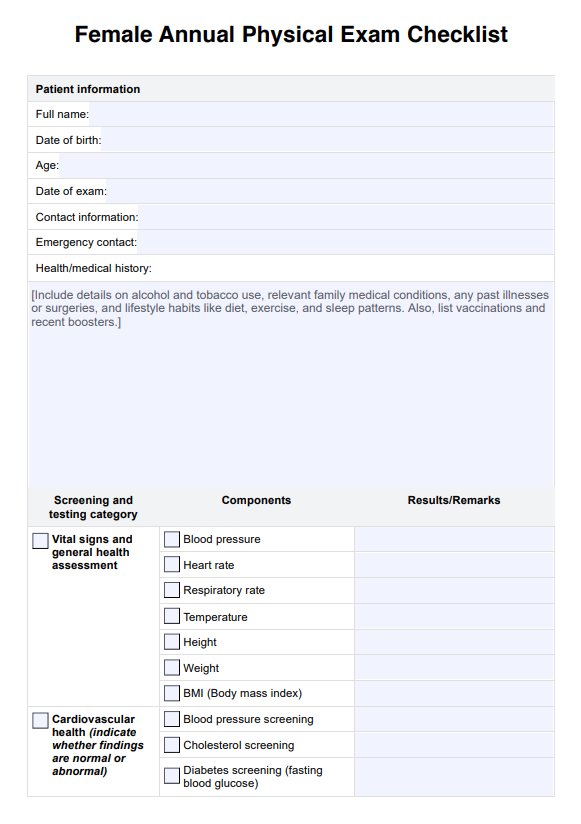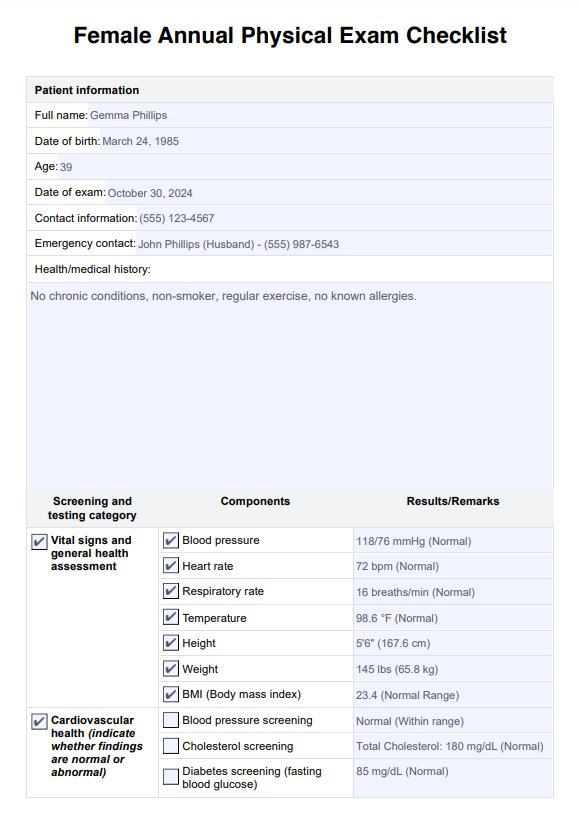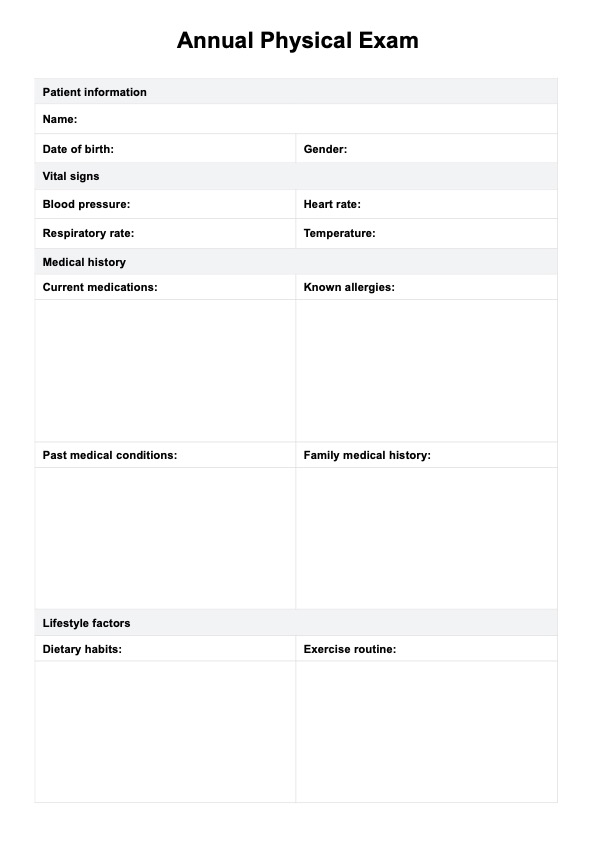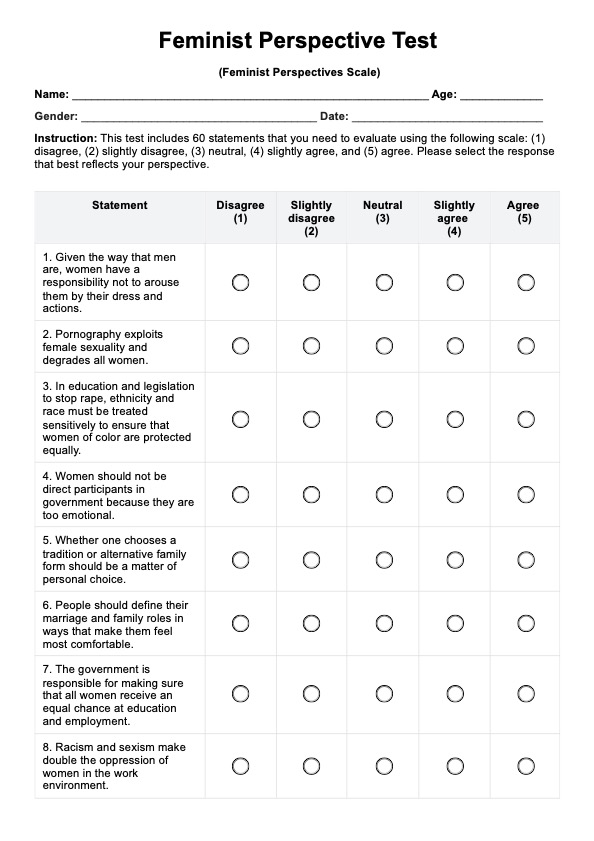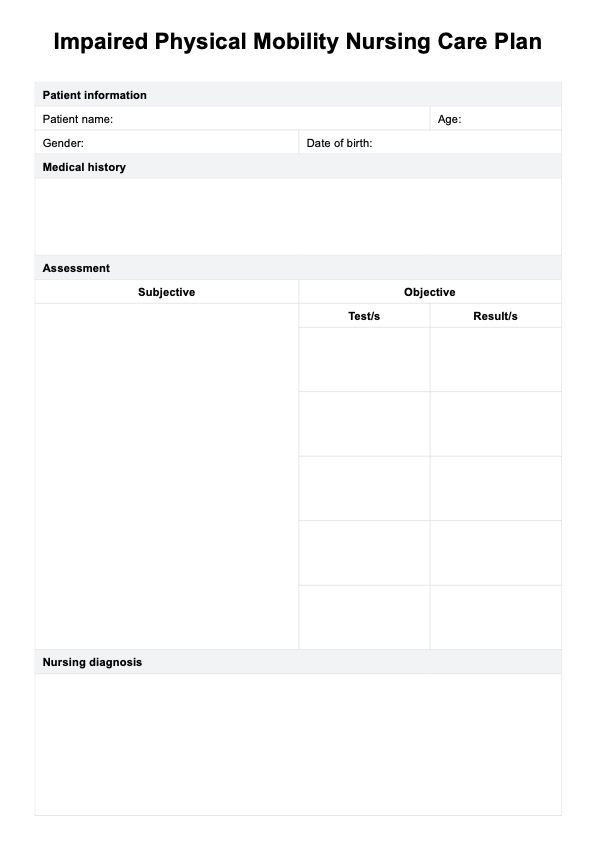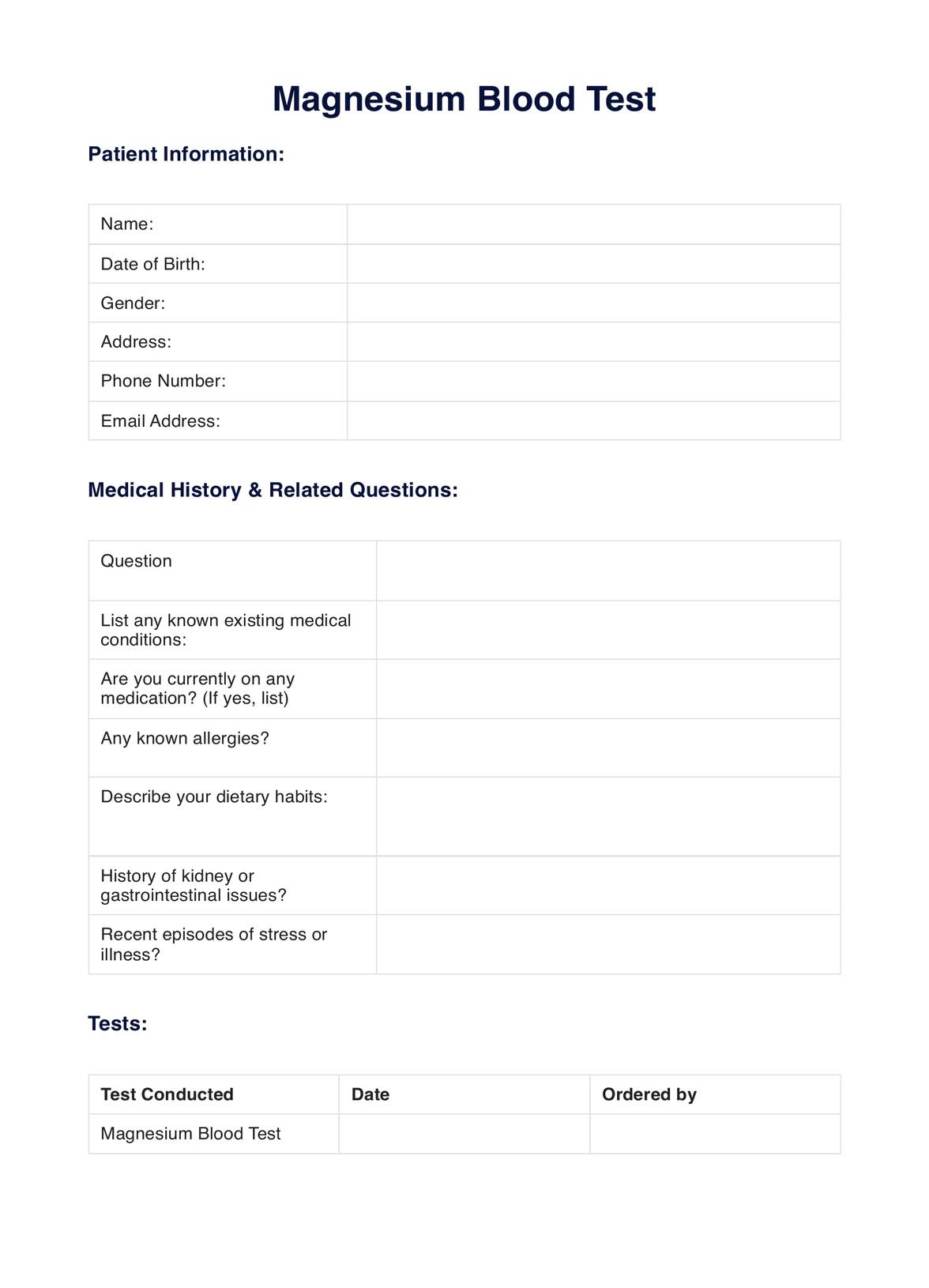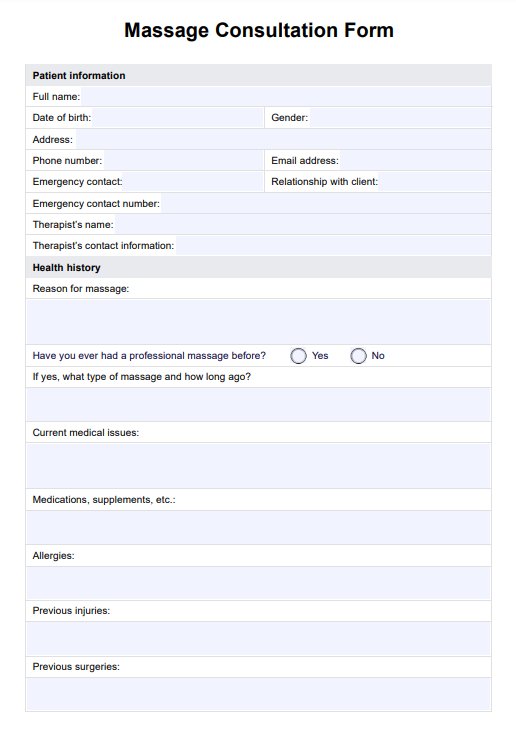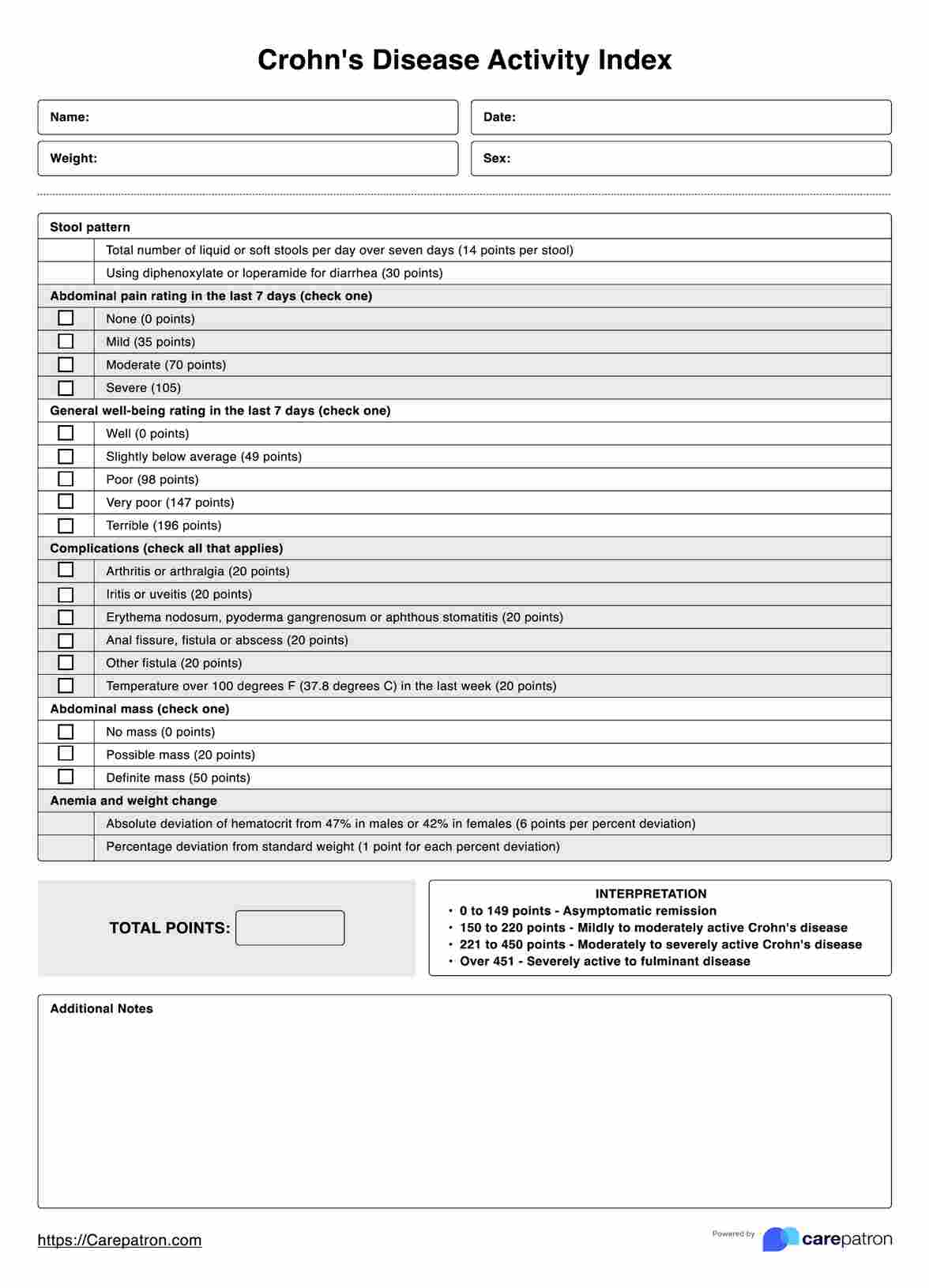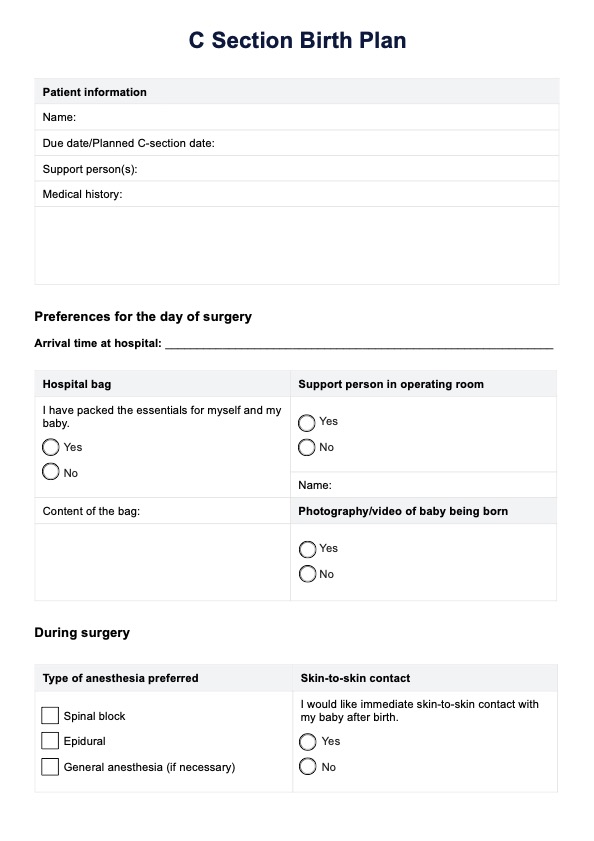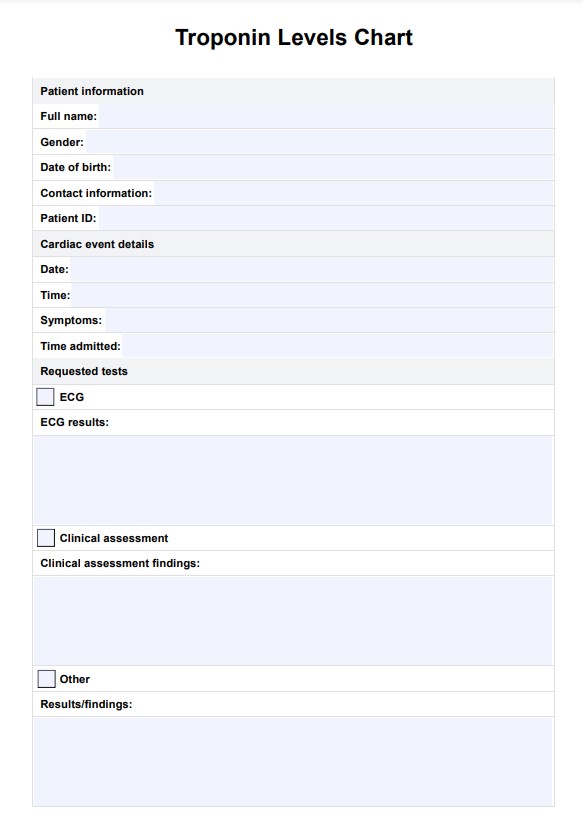Female Annual Physical Exam
Discover the essential Female Annual Physical Exam Checklist, complete with an example to guide you. Download our comprehensive PDF for your health needs.


What is a Female Annual Physical Exam Checklist?
A Female Annual Physical Exam Checklist is a comprehensive guide used to ensure that essential aspects of a woman's health are evaluated during her yearly physical examination. This checklist covers various screening and assessment areas that help healthcare providers monitor and maintain the health of female patients. Key components of an annual physical exam checklist for females include breast cancer screening and cervical cancer screening, both critical for early detection of potential health issues. Additionally, assessing risk factors such as blood pressure, cholesterol screening, and medical history aids in identifying conditions that could impact long-term health.
A women's physical exam checklist also addresses health history, which includes questions about lifestyle, family medical background, and any recent health changes. This informs healthcare providers about potential risks and helps guide personalized care. Other key parts of the checklist often include a pelvic exam to evaluate reproductive health, as well as colon cancer screening or colorectal cancer screening for eligible age groups. This holistic approach ensures women receive preventive care in areas like breast cancer and other critical conditions, ultimately supporting their overall health. Regularly using this checklist allows providers to maintain women's health proactively through each annual physical examination.
Female Annual Physical Exam Template
Female Annual Physical Exam Example
How does it work?
Carepatron's Female Annual Physical Exam Checklist offers a structured approach for medical professionals to conduct thorough annual physical exams for female patients. This step-by-step template ensures each essential area is covered, promoting comprehensive care and early detection of potential health concerns.
Step 1: Access the exam template
Healthcare professionals can directly access the Female Annual Physical Exam Checklist template within this guide. The template provides a standardized format to streamline the examination process, ensuring no critical steps are missed and simplifying the preparation needed for each patient's annual physical exam.
Step 2: Use the template to conduct the exam
Using the template as a guide, you can systematically address each part of the physical exam. The template covers essential health markers, from blood pressure to pelvic exam assessments, ensuring a comprehensive examination that adheres to preventive care standards.
Step 3: Gather and interpret data
As you progress through the checklist, you can record and review critical data, including cholesterol levels, medical history, and cancer screening results. This data offers insights into the patient's current health status and helps identify any red flags or risk factors requiring closer attention.
Step 4: Provide patient education
Using the information gathered, offer personalized education on topics such as breast cancer screening, lifestyle choices, and preventive measures. Educating patients fosters a proactive approach to health, empowering them with knowledge about their health and well-being.
Step 5: Discuss next steps
Finally, discuss the results and establish follow-up plans as needed. Whether scheduling further tests or setting up lifestyle goals, discussing the next steps ensures patients are fully informed and supported in maintaining their health between exams.
When would you use this checklist?
The Female Annual Physical Exam Checklist is essential for various instances that ensure comprehensive care, preventive health measures, and early detection of potential conditions. Below are situations in which this checklist is incredibly beneficial.
Annual health screening
Using the checklist during a female physical exam helps to evaluate overall health by examining vital signs, performing screenings, and reviewing family medical history. This provides a complete overview of the patient's health and helps identify developing health problems.
Preventive cancer screenings
This checklist is crucial for breast examination and pap smear screenings to help detect breast cancer and cervical abnormalities early. A regular breast exam within the annual exam helps monitor any changes, contributing to early detection and effective intervention if necessary.
Birth control and reproductive health
For patients seeking birth control or guidance on reproductive health, the checklist covers essential areas such as blood tests to assess hormone levels and overall reproductive health. This ensures a well-rounded approach to managing birth control options safely and effectively.
Monitoring chronic conditions
Patients with existing or potential conditions like heart disease benefit from using the checklist to track vital signs, blood pressure, and lab results. Regular monitoring helps manage these chronic issues and prevent complications over time.
Comprehensive blood testing
Routine blood tests included in the checklist offer insights into cholesterol, glucose levels, and other markers that reflect underlying health. This is critical in identifying issues early and addressing risk factors before they escalate.
Benefits of using this checklist
Below are some of the significant benefits of utilizing this checklist in annual exams:
Early detection of health conditions
With the checklist's systematic approach, healthcare providers can detect early signs of various health conditions before they become advanced. Routine checks, including assessments of lymph nodes, complete blood count, and cardiovascular health, help spot abnormalities early, facilitating timely intervention.
Personalized care based on age group
The checklist is adaptable to different age groups and considers other risk factors, allowing healthcare providers to customize care plans based on each patient's stage of life. For example, a woman in her 20s may need fewer cardiovascular screenings, while those over 40 may require cardiovascular disease and skin cancer screenings.
Monitoring healthy range metrics
Routine exams track important metrics, like blood pressure screening and cholesterol levels, keeping these within a healthy range. This ongoing monitoring helps patients stay on top of their health while the primary care provider can make informed decisions about lifestyle adjustments or medications when necessary.
Commonly asked questions
A woman's yearly physical includes a comprehensive evaluation of vital signs, screening tests (such as blood pressure screening and diabetes screening), and assessments of overall health. Additional elements may include a breast exam, pelvic exam, and blood work based on age and health history.
During a women's annual exam, expect a health history review, physical assessments, and preventive screenings like pap smear, cholesterol, and relevant tests. The healthcare provider may also conduct lifestyle and risk factor discussions to personalize ongoing care.
An annual physical is a comprehensive health check that focuses on physical assessments and screening tests to detect any health conditions. A wellness exam, on the other hand, focuses more on preventive health, reviewing lifestyle habits and other risk factors, and setting goals for maintaining overall wellness.


